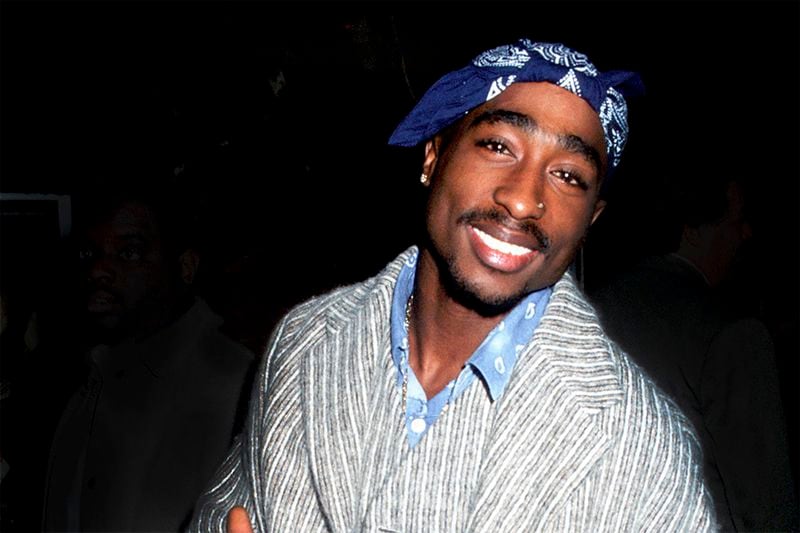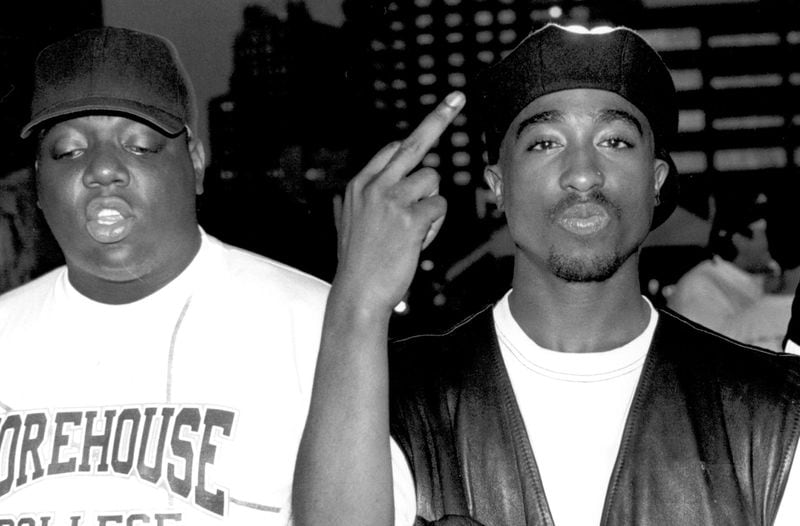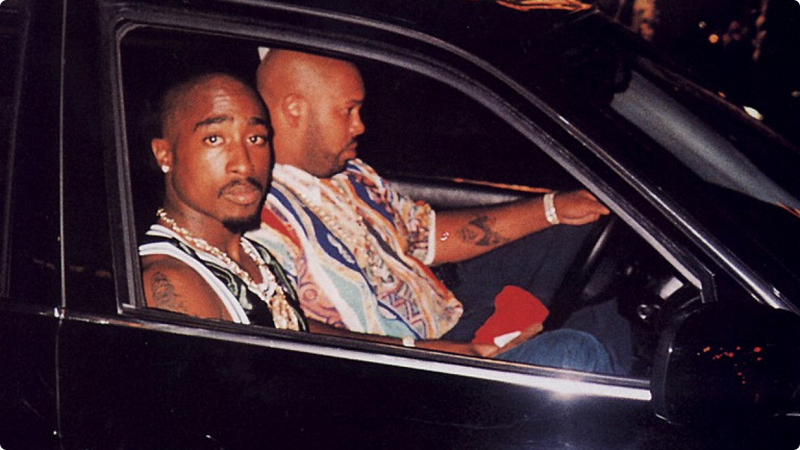Duane “Keffe D” Davis was arrested a few days ago, the only person so far implicated in the gangsta rap star’s death. Even though the background has been processed for years, the American justice system was able to reconstruct what happened the night Tupac was shot. Everything indicates the leadership of the accused in the action. “It was he who orchestrated the plan that was carried out,” they say.
On the night of September 7, 1996, Tupac Shakur code name of gangsta-rap was killed by four gunshots shot dead by an anonymous gunman. Two of the bullets hit him in the chest, destroying veins, arteries and his right lung. Another lodged in his arm and the last in his thigh. As word spread via phone call and breaking news, the rapper was taken to University Medical Center of Southern Nevada. Sedated and unconscious, he was visited by loved ones like Snoop Dogg, who prayed next to his body. After resisting for six days, he died.
The death of Shakur added a painful chapter to a story of clashes and shootings between rappers from the east and west coasts. This wasn’t even the first time Tupac had to suffer. He had already been shot five times in November 1994, while on his way to meet The Notorious BIG, another notable name in the bustling gangsta scene. They were friends. Since then, they were fierce rivals. In fact, 2Pac publicly implicated him in the shootout with P.Diddy.

The gangsta, the cry of the black neighborhoods of Los Angeles, has already had to struggle a lot to enter the traditional media, and on top of that, bleed out in an internal war at the expense of its most brilliant names. “It was barely talked about, but for years there was a simmering animosity between the rap communities in different cities. . Non-New York artists, in particular, often felt disrespected by that city’s rap elite, whether by record labels ignoring them, or by radio DJs Kool DJ Red Alert and Mr. Magic. who did not broadcast his music, or by non-New York artists. by the media that covered him (almost all located in New York) who despised his work,” explains columnist Soren Baker, in his well-researched book. The History of Gangsta Rap.
Tupac, moreover, already carried his own demons . Between 1993 and 1995, at the height of his popularity, he was arrested no less than six times. Even as he was recovering from his injuries from the shooting he accused “Biggie” of, he had to appear in court on a charge of sexual abuse against a woman, for which he had to spend time in the shadow. It was released in October 1995 after Los Angeles label Death Row Records, which featured many gangsta rap stars, posted $1.4 million in bail.
Although he tried to be conciliatory with the rappers of the East Coast, Tupac could not avoid altercations with some with whom he accumulated quarrels. It was fodder for the media. “Amid the controversy, hip-hop newspapers ignored virtually all projects that included rappers from both coasts” Baker explains in his book.

By 1996, Tupac was already one of the highest-ranking gangsta rap royalty. . Its reach is limited outside the USA, but it is nevertheless sufficient to position its latest albums. Me against the world And All eyes on me, among the first places in the sales ranking. Nothing minor in a country obsessed with brands (and photoshoots).
So the night of September 7th arrived. “Tupac Shakur and Marion Suge Knight (death row record label mogul, specializing in gangsta rap) were driving through Las Vegas after witnessing a fight with Mike Tyson,” El País reported in 1996.. “When they stopped at a red light, a car pulled up next to them and someone sprayed them with bullets from inside. Knight suffered only a minor head injury, but Shakur was admitted in very serious condition and had his right lung removed on Sunday.
A murder in retaliation
A few days ago, 27 years after the crime, Las Vegas police made the first arrest of a suspect in the crime, Duane ‘Keffe D’ Davis (60). It was charged with murder with a deadly weapon for alleged role as leader of group that shot Shakur .
For the police, the suspect’s responsibility is total. “Duane Davis led this group of individuals who committed the crime,” Lt. Jason Johansson said at a news conference last Friday. “He was the one who orchestrated the plan that was carried out.” It all allegedly happened in retaliation for a beating that Shakur’s companions inflicted on gang member Orlando Anderson, nephew of Davis, at the MGM Grand Garden Arena, where the Tyson fight took place.

According to Clark County Deputy Prosecutor Marc DiGiacomo, Davis was allegedly the “on-scene commander” who “ordered the death” of Shakur after the fight. “Mr. Davis has formulated a plan to take revenge on Mr. Knight and Mr. Shakur.” he assured.
As reported by international agencies, the police carried out a thorough reconstruction of the events. Security footage from the hotel was released in which several men are seen kicking and punching a person they identified as Anderson. According to data collected by the investigation, one of the people who participated in the beating was Marion “Suge” Knight, co-founder and then general manager of Death Row Records. . It would have all been a score-settling, as Anderson allegedly tried to attack the group a year earlier.
According to Lieutenant Johansson, it was this incident that triggered “Tupac Shakur’s shooting death in retaliation” . So, Davis, Anderson and two other individuals obtained weapons, got into a white Cadillac and followed the black BMW driven by Kight in which Tupac was a passenger. That night he was without his bodyguard, Frank Alexander. He alleged he was assigned to drive Shakur’s girlfriend Kidada Jones’ car that day.
In the documentary series Death Row Chronicles (2018), Duane Davis made sure he was in the co-pilot’s seat. From there, he slipped the gun involved in the shooting into the back seat. ““I’m not going to disrespect the traffic rules, but the shots were coming from the back seat.” , he stressed. Of course, he pointed out that Anderson was among those behind it. He denied any connection with the crime. He did not live much longer as he died in 1998.

Years later, Davis published his autobiography, Legend of Compton Street. He details: “Tupac made a strange movement and started looking for something under his seat,” he wrote. “It was the first and only time in my life that I was able to understand the police instruction to ‘keep your hands where they can be seen.’ But Pac pulled out a gun and that’s when the shooting started. “One of my colleagues who was sitting behind grabbed a gun and started to react. »
In the text, Davis reveals that he first broke his silence in 2010 during a closed-door meeting with federal and local officials. At the time, he was facing life in prison for drug trafficking. Therefore, he agreed to speak with them about Tupac’s murder, as well as the shooting of Tupac’s rap rival Notorious B.I.G. . arrived six months later.

“They offered to let me go for running a ‘criminal enterprise’ and several alleged homicides in exchange for the truth about the Tupac and Biggie murders. “, wrote. “They promised that they would destroy the indictment and arrest the grand jury if I helped them.” A step that was opened to clarify the drama.
Las Vegas police searched a home in mid-July in the Las Vegas suburb of Henderson that is linked to Davis. Authorities were searching for items “related to the murder of Tupac Shakur.” according to the search warrant. They recovered several computers, a cell phone and hard drive, a Vibe magazine in which Shakur appeared, several .40 caliber bullets, two “tubes containing photographs” and a copy of Davis’ memoirs.
Clark County District Judge Jerry Wiese denied Davis bail. “It has often been said that justice delayed is justice denied,” prosecutor Steve Wolfson said after the hearing in a brief comment to the AP. “Justice in this case has been delayed, but it will not be denied. »
Continue reading in Cult
Source: Latercera
I am Robert Harris and I specialize in news media. My experience has been focused on sports journalism, particularly within the Rugby sector. I have written for various news websites in the past and currently work as an author for Athletistic, covering all things related to Rugby news.


